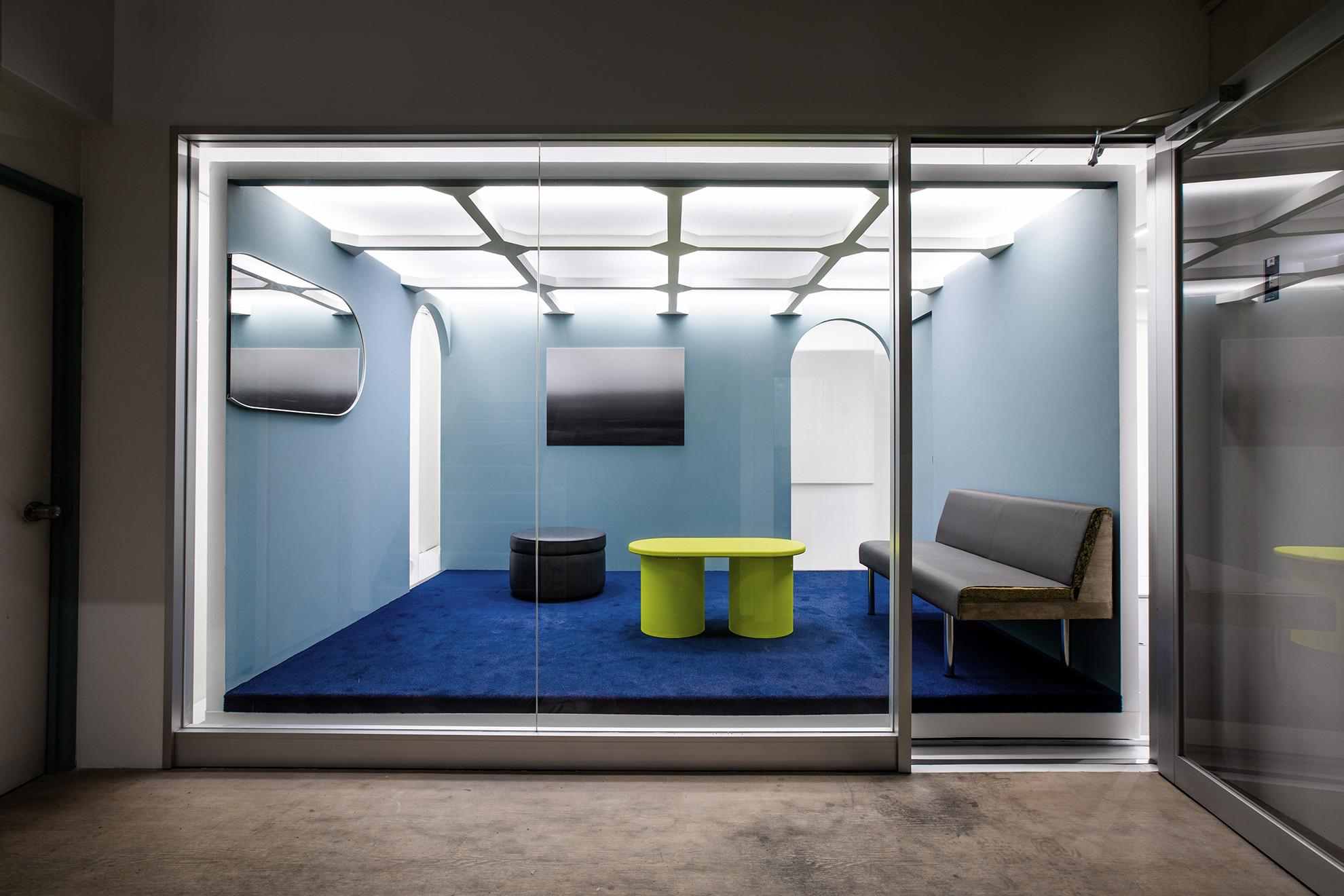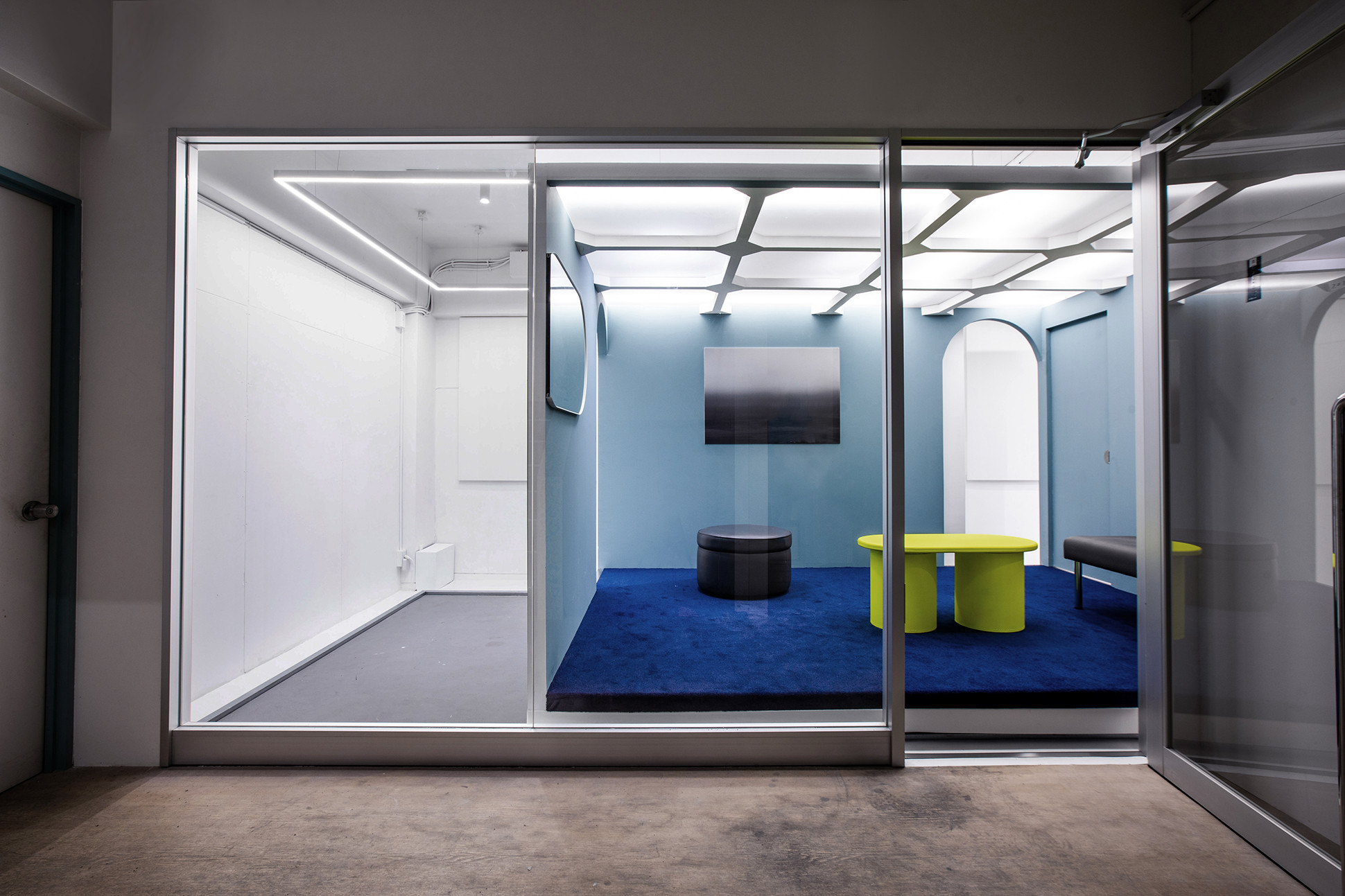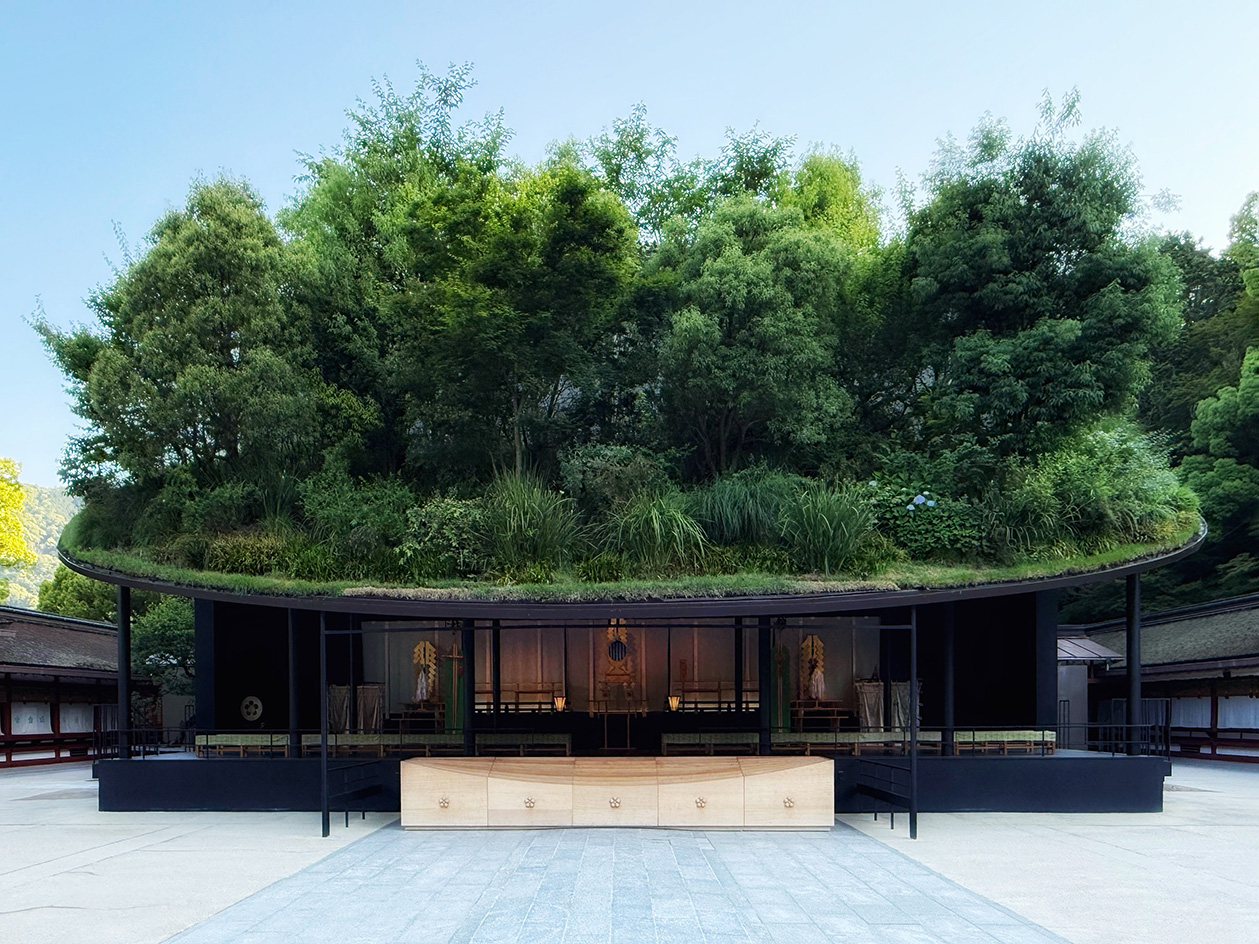Sliding components create a transformable office in Kyoto: see it move!
Naoshi Kondo Studio has created a transformable office with its own architectural puzzle box that turns an L-shaped unit into a multifunctional space

This multifunctional, transformable office space occupies a unit in a commercial building in Kyoto, Japan. Designed by Naoshi Kondo Studio, the L-shaped interior has been carefully crafted to cover three completely different uses, a photography studio, a workspace, and a conference room.
The transformable office: watch the film
The device: a moving reception room
Tying all this together is the project’s central device, a moving reception room that also doubles up as the conference area. Lined with a rich dark blue carpet, light blue walls and arched doorways, the ‘room’ is a lightweight frame that can be shifted along two axes. Statement pieces of furniture give the room a strong geometric feel.

The main entrance wall to the unit is glazed, and with the reception space in its ‘parked’ position, this reveals and displays the colourful space to the world as a kind of vitrine, advertising the client’s business. Step inside, and the doorways lead through to the rest of the space.

In reception mode, the area around the corner can be set up as an extension of the office, with storage shelving, and a modular conference table. ‘This mechanism introduces a high degree of flexibility in space utilisation and movement, ensuring optimal convenience for the users,’ the architect says, explaining how the main workspace is a typical photography studio, requiring constantly changing set-ups and teardowns.

‘Having a moving reception room naturally encourages periodic tidying,’ Kondo continues, ‘which caters to those who thrive in a dynamic work setting.’ Slide the reception space all the way to the right and it opens up a ‘white box’ space behind the glass frontage.

The reception can then be slid back on itself around the corner (after tidying away all the paraphernalia of the office), maximising the length of the work environment. Elements like wall mirrors are cleverly split across the different stages to give a sense of a jigsaw slotting into place.

Transformable space is a perennial fascination amongst architects of a certain age. The Honsha Office works because its dynamic component is practical, not fanciful, expanding the potential of an awkward space while preserving space, privacy and presentation.
Receive our daily digest of inspiration, escapism and design stories from around the world direct to your inbox.
Jonathan Bell has written for Wallpaper* magazine since 1999, covering everything from architecture and transport design to books, tech and graphic design. He is now the magazine’s Transport and Technology Editor. Jonathan has written and edited 15 books, including Concept Car Design, 21st Century House, and The New Modern House. He is also the host of Wallpaper’s first podcast.
-
 Gorden Wagener leaves the helm of Mercedes-Benz design after 28 years with the company
Gorden Wagener leaves the helm of Mercedes-Benz design after 28 years with the companyThe German designer is stepping down from the role of chief design officer at Mercedes-Benz. We look back at his influence and impact on the world of automotive and luxury design
-
 These Christmas cards sent by 20th-century architects tell their own stories
These Christmas cards sent by 20th-century architects tell their own storiesHandcrafted holiday greetings reveal the personal side of architecture and design legends such as Charles and Ray Eames, Frank Lloyd Wright and Ludwig Mies van der Rohe
-
 Lucila Safdie’s ‘feminine and surreal’ womenswear is inspired by teenage bedrooms and internet lore
Lucila Safdie’s ‘feminine and surreal’ womenswear is inspired by teenage bedrooms and internet loreThe latest in our Uprising series, the Central Saint Martins graduate is honing a pastel-shaded vision rooted in depictions of girlhood in film and literature
-
 This Fukasawa house is a contemporary take on the traditional wooden architecture of Japan
This Fukasawa house is a contemporary take on the traditional wooden architecture of JapanDesigned by MIDW, a house nestled in the south-west Tokyo district features contrasting spaces united by the calming rhythm of structural timber beams
-
 Take a tour of the 'architectural kingdom' of Japan
Take a tour of the 'architectural kingdom' of JapanJapan's Seto Inland Sea offers some of the finest architecture in the country – we tour its rich selection of contemporary buildings by some of the industry's biggest names
-
 Matsuya Ginza lounge is a glossy haven at Tokyo’s century-old department store
Matsuya Ginza lounge is a glossy haven at Tokyo’s century-old department storeA new VIP lounge inside Tokyo’s Matsuya Ginza department store, designed by I-IN, balances modernity and elegance
-
 The Architecture Edit: Wallpaper’s houses of the month
The Architecture Edit: Wallpaper’s houses of the monthThis September, Wallpaper highlighted a striking mix of architecture – from iconic modernist homes newly up for sale to the dramatic transformation of a crumbling Scottish cottage. These are the projects that caught our eye
-
 Utopian, modular, futuristic: was Japanese Metabolism architecture's raddest movement?
Utopian, modular, futuristic: was Japanese Metabolism architecture's raddest movement?We take a deep dive into Japanese Metabolism, the pioneering and relatively short-lived 20th-century architecture movement with a worldwide impact; explore our ultimate guide
-
 A new Tadao Ando monograph unveils the creative process guiding the architect's practice
A new Tadao Ando monograph unveils the creative process guiding the architect's practiceNew monograph ‘Tadao Ando. Sketches, Drawings, and Architecture’ by Taschen charts decades of creative work by the Japanese modernist master
-
 A Tokyo home’s mysterious, brutalist façade hides a secret urban retreat
A Tokyo home’s mysterious, brutalist façade hides a secret urban retreatDesigned by Apollo Architects, Tokyo home Stealth House evokes the feeling of a secluded resort, packaged up neatly into a private residence
-
 Landscape architect Taichi Saito: ‘I hope to create gentle landscapes that allow people’s hearts to feel at ease’
Landscape architect Taichi Saito: ‘I hope to create gentle landscapes that allow people’s hearts to feel at ease’We meet Taichi Saito and his 'gentle' landscapes, as the Japanese designer discusses his desire for a 'deep and meaningful' connection between humans and the natural world